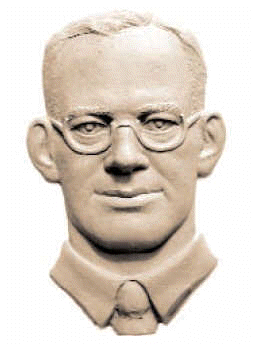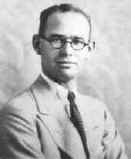Gareth Jones
[bas relief by Oleh Lesiuk]
HOME |
Stop Press |
Complete Soviet Articles & Background Information |
Précis of Gareth's
|
All Published Articles |
BOOKS
|
|
|
|
More Than Grain of Truth(2005) |
|
|
TOPICAL
'Are you Listening NYT?' U.N. Speech - Nov 2009 |
Gareth Recognised at Cambridge - Nov 2009 |
Reporter and the Genocide - Rome, March 2009 |
Order of Freedom Award -Nov 2008 |
Premiere of 'The Living' Documentary Kyiv - Nov 2008 |
Gareth Jones 'Famine' Diaries - Chicago 2008 |
Aberystwyth Memorial Plaque 2006 |
GENERAL
Scholarship Fund |
Site Map |
Links |
Legal Notices |
Sponsored Links |
Contact |
The Western Mail 9th August, 1933Craftsmen of Wales THE PUMP BUILDER OF LLANYBYTHEROld-Fashioned in Drills. Still in UseBy GARETH JONESWhat a field there is, for the Welsh novelist in the old craftsmen of Wales. A Forsyte Saga telling of how father handed craft down to son, how the skill was inherited, how the industrial revolution gradually took the bread away from these master makers, how the nineteenth century merged into the twentieth until in the thirties only a few gallant men were left to struggle against the ever-growing monster, the machine, remains to be written before Wales is bereft of all her craftsmen. The novelist might, choose the Davieses, of Abercych, who for centuries have been woodturners; or he might, if he wished to describe three generations only, depict the story of the family of Cledwyn Roes, pump builder, of Llanybyther whose father made pumps and whose grandfather was in the same craft. The last named used many of the tools his grandfather, Griffith Rees, used almost a century ago. Our novelist would, however, have to be a better scientist -than myself to understand the mechanical intricacies of Mr. Cledwyn Rees’s work which was so technical that I could only listen to him in silence and admiration. When I entered his yard and found him sharpening an axe and surrounded by large logs of wood I little expected to find such ingenious triumphing over the forces of Nature. Soon, however, I saw that there was a depth of skill and science in that simple yard and workshop. Long LogsTake, for example, those long logs of wood through which Mr. Rees has bored a narrow hole from one end to another to carry the water up from 23ft. below, for thirsty dwellers in the Teify Valley. It is an art-unfortunately, nearly a past art-to drill those holes, and I understood why when Mr. Bees showed me the old fashioned drills with which he does the work. His shell drill, he explained, is better than the new screw drill, which is not so accurate, although very much quicker. As happens so often in the present period care is sacrificed for speed in the new tool. The logs of wood which a always of larch, are plunged into the earth after hey have been fitted with special valves, which Mr. Bees makes himself of wood, a bit of leather, and a piece of iron. Inside the hole which runs all the way in the log there is a long iron spindle or valve rod which has been made in a smithy. I tremble to attempt to describe what happens to that rod when the handle works, since Mr. Bees may read this article with a critical eye and may wonder at the ignorance of his visitor. I therefore confess in all humility that how the water comes up to the top remains to me a mystery, although I remember learning it in one of my first science lessons. Deep DownSuffice it to say that Mr. Cledwyn Rees succeeds in raising water from incredible depths. He tells me that a pump built by his uncle at Glasfryn plunges 18 yards deep in the soil. Mr. Cledwyn Rees has built pumps as far as Aberystwyth, and there are samples of his work in Strata Florida, Llanybyther, Newcastle-Emlyn, and Llandovery, to mention but a few of his achievements. There must be very many people who have drunk their clear, cold water from his pumps. This year he has built three pumps and usually he takes about five days to make one. He is not only a master pump builder but also a good cartwright and wheelwright. He is grateful to the Llanybyther Smithy for what it has done for him in the past. Davies the smith, Lianybyther, he says was one of the best craftsmen in the country. Athough he was very silent when Tim Hughes, millwright, Llanllwni, the Western Mail photographer and I paid him, sudden visit, there were wrinkles around his eyes which only come of much laughing. May he long continue to summon up water from the depths for the thirsty of West Wales. |
GARETH JONES (1905 -35) |




